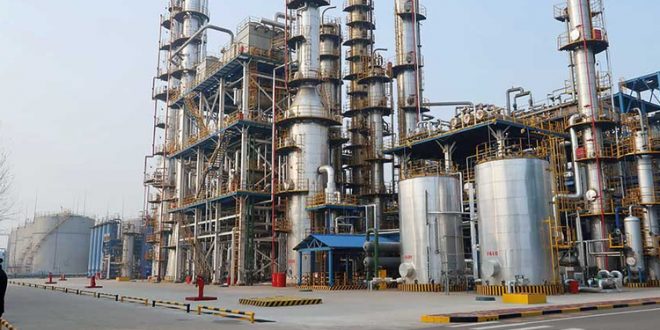Middle East producers led by Saudi Arabia are widely expected to raise their official selling prices for January loading crude in December, although the outcome of the OPEC and non-OPEC meetings in coming days could affect the size and even the direction of any price change.
Saudi Aramco is expected to raise the price of medium, sour Arab Light for January by 50-60 cents/b from December, market participants say, citing strength in the benchmark cash Dubai market as well as firm spot differentials last month. Some expect smaller increases considering still lackluster refining margins and competition from arbitrage barrels.
Cash Dubai’s differential to front-month Dubai futures — understood to be a key element in OSP calculations – averaged 18 cents/b in November, up sharply from minus 67 cents/b in October, Platts data showed.
“Buying has been good through all of November, especially from India, China and Japan. Prices for middle grades like Upper Zakum and Oman will likely be higher as product margins for gasoil and kerosene have been good,” a trader in Singapore said.
Overall market sentiment has received a boost from signs of improving demand from Asia’s large crude oil importers, as well as news of successful COVID-19 vaccine trials that may help contain the global pandemic and revive oil demand.
Japan’s crude oil stocks fell 9% week on week to 68.71 million barrels Nov. 21, the lowest in 38 weeks, as local refiners raised crude throughput by 3% over the same period to 2.55 million b/d, the Petroleum Association of Japan said Nov. 26.
“Refinery run rates are going to increase even more in December and January as weather reports indicate a harsh winter in Korea and Japan,” a trader with another North Asian refiner said, adding that refinery run rates in Japan have increased steadily since October.
India’s decrease in COVID-19 infections has revived economic activity across the country, prompting refineries to raise run rates. India’s refinery capacity utilization rose to 87% in October from 86% in the month before, oil ministry data showed.
Traders said OSPs for medium and heavy grades may see larger increases in their OSP differentials than light, sour crudes as spot premiums for grades including Abu Dhabi’s Upper Zakum, Iraq’s Basrah Light and Oman Export Blend were well supported last month.
“The market for lighter grades is a bit weak. Basrah spot market was quite strong as well. Think medium grades will see better prices than lighter ones,” a trader with a North Asian refiner said.
The strength in medium, sour benchmark Dubai reflects a tightening market for similar grades as demand in Asia continues to recover from lows seen earlier this year, while supplies remain curtailed under a production agreement by OPEC and its partners.
OPEC+ DECISION KEY
Beyond the current demand-supply balance, a meeting of OPEC and its partners this week over production levels in 2021 could play a decisive role in OSP calculations by Middle East producers. With disagreement over production quotas already delaying a highly-anticipated decision on whether deep output cuts will be extended into 2021, market participants remained cautious of any major disagreement in talks that could have a spillover effect on pricing decisions and alter demand-supply dynamics.
“OPEC+ should surely sustain some amount of the cuts into next year; if they don’t then producers will be in a massive pricing war,” a crude trader in Singapore said.
Saudi Arabia in March slashed its OSPs following a breakdown in OPEC+ talks over production targets, causing a broad selloff in oil markets and forcing other producers into a price war.
Subsequently, OPEC and nine allies led by Russia implemented historic production cuts to combat the pandemic-fomented collapse in oil demand. The curbs began at 9.8 million b/d from May and were eased to 7.7 million b/d in August as the global economy began to recover, particularly in Asia.
The OPEC+ production cuts are scheduled to taper again to 5.8 million b/d from January, although struggles to contain COVID-19 infection rates in the western countries have stalled the global economic recovery, prompting some OPEC+ members to advocate an extension of the current cuts.
OPEC’s 13 countries had hoped to meet with Russia and other allies on Dec. 1 to finalize an agreement on output levels, but talks among its own members have hit a rancorous wall, forcing the coalition to postpone its meeting until Dec. 3 so that more consultations can take place.
The last-minute holdup will sow doubts over the four-year-old alliance’s staying power, as fatigue among many countries to reining in so much of their crude production may be reaching a breaking point. The OPEC+ coalition had at one point seemed close to a decision to maintain its collective 7.7 million b/d in output cuts through at least March to buttress oil prices against the impact of rising COVID-19 infections in the West.
Delegates said the framework of a cut extension for three months had been reached at OPEC’s formal meeting Nov. 30, but the UAE, which has been wavering in its commitment to the group, has yet to take a position, endangering the negotiations, S&P Global Platts reported earlier.
Some countries are also still piqued that other members have yet to make up for previous quota-busting with the “compensation cuts” they owe, leading to a highly-charged atmosphere and recriminations, sources said.

 Iran Energy News Oil, Gas, Petrochemical and Energy Field Specialized Channel
Iran Energy News Oil, Gas, Petrochemical and Energy Field Specialized Channel



